Current topics of functional links between primary cilia and cell cycle
- PMID: 26719793
- PMCID: PMC4696186
- DOI: 10.1186/s13630-015-0021-1
Current topics of functional links between primary cilia and cell cycle
Abstract
Primary cilia, microtubule-based sensory structures, orchestrate various critical signals during development and tissue homeostasis. In view of the rising interest into the reciprocal link between ciliogenesis and cell cycle, we discuss here several recent advances to understand the molecular link between the individual step of ciliogenesis and cell cycle control. At the onset of ciliogenesis (the transition from centrosome to basal body), distal appendage proteins have been established as components indispensable for the docking of vesicles at the mother centriole. In the initial step of axonemal extension, CP110, Ofd1, and trichoplein, key negative regulators of ciliogenesis, are found to be removed by a kinase-dependent mechanism, autophagy, and ubiquitin-proteasome system, respectively. Of note, their disposal functions as a restriction point to decide that the axonemal nucleation and extension begin. In the elongation step, Nde1, a negative regulator of ciliary length, is revealed to be ubiquitylated and degraded by CDK5-SCF(Fbw7) in a cell cycle-dependent manner. With regard to ciliary length control, it has been uncovered in flagellar shortening of Chlamydomonas that cilia itself transmit a ciliary length signal to cytoplasm. At the ciliary resorption step upon cell cycle re-entry, cilia are found to be disassembled not only by Aurora A-HDAC6 pathway but also by Nek2-Kif24 and Plk1-Kif2A pathways through their microtubule-depolymerizing activity. On the other hand, it is becoming evident that the presence of primary cilia itself functions as a structural checkpoint for cell cycle re-entry. These data suggest that ciliogenesis and cell cycle intimately link each other, and further elucidation of these mechanisms will contribute to understanding the pathology of cilia-related disease including cancer and discovering targets of therapeutic interventions.
Keywords: Cancer; Cell cycle; Ciliogenesis; Primary cilia; Ubiquitin–proteasome system.
Figures
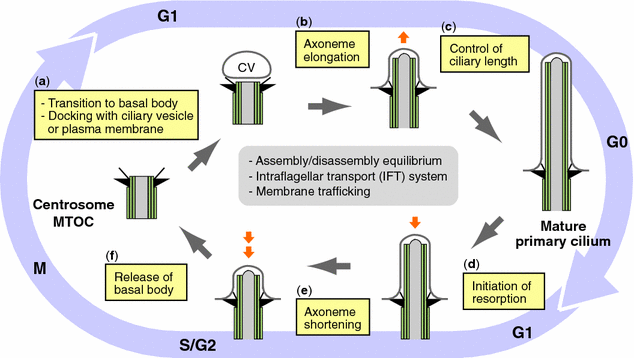
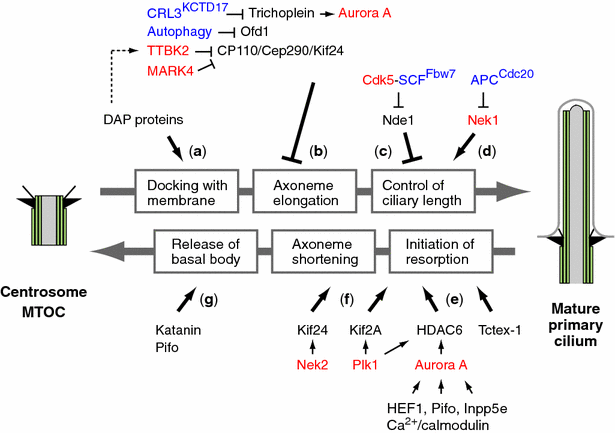
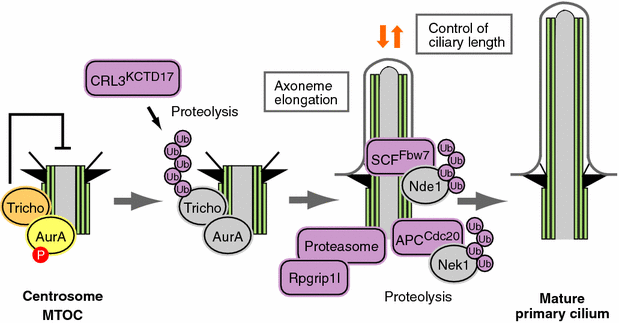
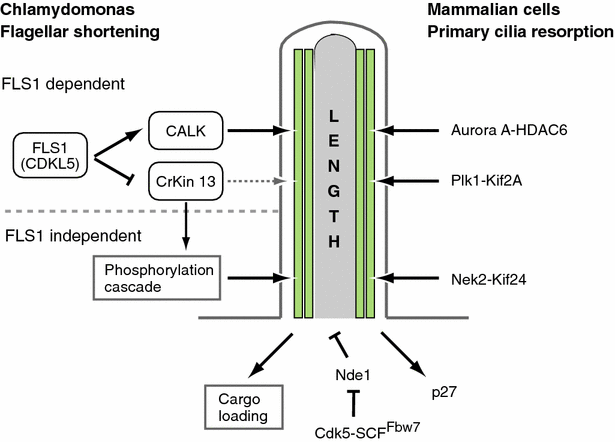
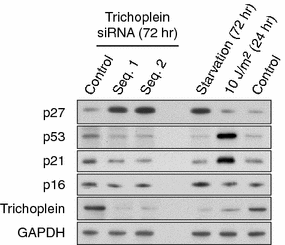
Similar articles
-
Ubiquitin-proteasome system controls ciliogenesis at the initial step of axoneme extension.Nat Commun. 2014 Oct 1;5:5081. doi: 10.1038/ncomms6081. Nat Commun. 2014. PMID: 25270598 Free PMC article.
-
Cell cycle-dependent ubiquitylation and destruction of NDE1 by CDK5-FBW7 regulates ciliary length.EMBO J. 2015 Oct 1;34(19):2424-40. doi: 10.15252/embj.201490831. Epub 2015 Jul 23. EMBO J. 2015. PMID: 26206584 Free PMC article.
-
LRRC45 contributes to early steps of axoneme extension.J Cell Sci. 2018 Sep 20;131(18):jcs223594. doi: 10.1242/jcs.223594. J Cell Sci. 2018. PMID: 30131441
-
Cellular Mechanisms of Ciliary Length Control.Cells. 2016 Jan 29;5(1):6. doi: 10.3390/cells5010006. Cells. 2016. PMID: 26840332 Free PMC article. Review.
-
Stages of ciliogenesis and regulation of ciliary length.Differentiation. 2012 Feb;83(2):S30-42. doi: 10.1016/j.diff.2011.11.015. Epub 2011 Dec 16. Differentiation. 2012. PMID: 22178116 Free PMC article. Review.
Cited by
-
Deficiency of calpain-6 inhibits primary ciliogenesis.BMB Rep. 2019 Oct;52(10):619-624. doi: 10.5483/BMBRep.2019.52.10.182. BMB Rep. 2019. PMID: 31619317 Free PMC article.
-
Aurora A and AKT Kinase Signaling Associated with Primary Cilia.Cells. 2021 Dec 20;10(12):3602. doi: 10.3390/cells10123602. Cells. 2021. PMID: 34944109 Free PMC article. Review.
-
EGF receptor kinase suppresses ciliogenesis through activation of USP8 deubiquitinase.Nat Commun. 2018 Feb 22;9(1):758. doi: 10.1038/s41467-018-03117-y. Nat Commun. 2018. PMID: 29472535 Free PMC article.
-
Primary cilia and lipid raft dynamics.Open Biol. 2021 Aug;11(8):210130. doi: 10.1098/rsob.210130. Epub 2021 Aug 25. Open Biol. 2021. PMID: 34428960 Free PMC article. Review.
-
Cellular Mechanisms and Regulation of Quiescence.Dev Cell. 2020 Nov 9;55(3):259-271. doi: 10.1016/j.devcel.2020.09.029. Dev Cell. 2020. PMID: 33171109 Free PMC article. Review.
References
Publication types
LinkOut - more resources
Full Text Sources
Other Literature Sources
Miscellaneous

